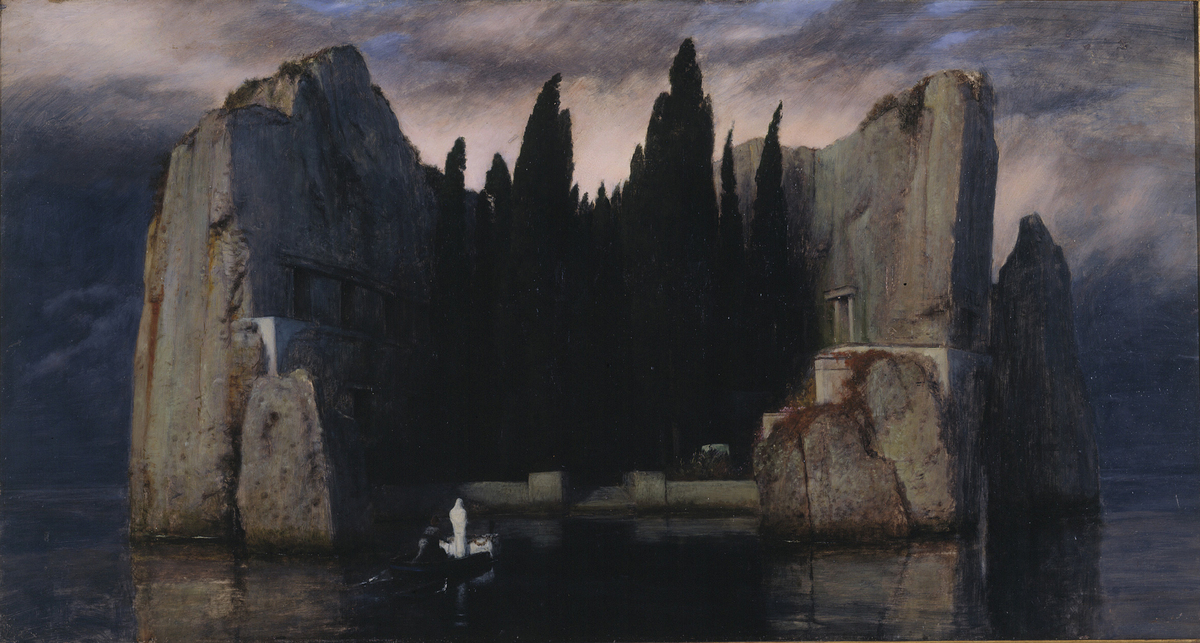Abstract
Island of the Dead, arguably the
most widely recognized of Arnold Böcklin’s (1827-1901) paintings,
appeared in multiple versions. Perhaps as a way to maximize his
audience, Böcklin made this painting just ambiguous enough, infusing it
with precisely the right amount of dread to open up numerous readings.
(The title was supplied by Böcklin’s savvy art dealer in Berlin, Fritz
Gurlitt.) The gambit worked: it has been alleged that, between 1885 and
1900, no good bourgeois home was without a reproduction of this or
another of his paintings. At a time when historical interpretations of
German nationhood were highly prized – despite (but also because of )
the onset of a certain post-unification ennui that afflicted the younger
generation – the romantic combination of melancholy, mystery, and
timelessness encapsulated in this painting may have appealed to Germans
in search of colossal dreamscapes made to order. In this respect, the
Italy that Böcklin and other “German-Romans” depicted in their works
symbolized a mythical Germany in which pure emotion and ideal beauty
still prevailed. One can also understand Böcklin’s appeal for a
generation that had embraced Wagnerian worlds of myth, nature, and the
cult of the hero. But not everyone bought into this: Böcklin also had
detractors who found his art decadent and unhealthy. After he was firmly
established in the art world (especially after a special exhibit of his
work was mounted in honor of his 70th birthday in 1897), humor magazines
often depicted the fears of traditionalist art critics as nightmares
filled with Böcklin-like motifs.
